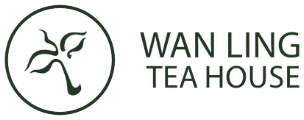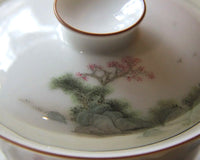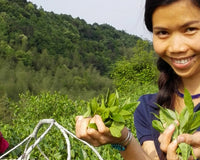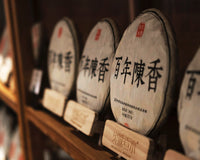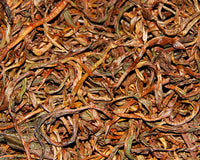Zhejiang is located in the east of China, bordering Shanghai and the other renowned tea producing provinces of Fujian & Anhui. It is one of the largest tea producers by output, area given to production, as well as export volume.
One could argue that Hangzhou, the capital of Zhejiang, acts as the fulcrum of the contemporary Chinese tea industry and culture, attracting high levels of investment for tea research via the Tea Science Research Institute. Hangzhou's status as the centre of Chinese tea culture is justified also by the presence of the National Tea Museum, which sits close the shores of the beautiful West Lake (Xi Hu 西湖).
Population: 54 million
Area: 100,000 km2
Tea Production Area: 170,410 hm2 (5th Largest in China).
Climate: Subtropical Monsoon (average annual temperature 15 -18 degrees Celsius).
Tea Types: predominantly green, some black.
Famous Teas: Long Jing (green tea), Anji White (green tea), Golden Bud, Jing Shan.
Notable Cultivars: Long Jing No.43, Anji Bai, Huang Jin Ya.
Tea Ware: Dragon Spring Kilns 龙泉.
Hangzhou is proud of its Long Jing tea; around the scenic West Lake, tea houses serve it to visitors and locals all year round when they come to soak up the unique atmosphere. Hangzhou is a great place to enjoy tea culture because it so accessible; Zhejiang's most famous tea hills and villages are within striking distance of the city, a rarity in contemporary China. The majority of Zhejiang's tea production is located in the northern area of the city and around Taimu Mountain.
With regard to climate and terroir, Zhejiang is a classic Jiangnan Tea Zone. 'Jiangnan' means South of the Yangtze river (江南). Within the context of Chinese culture 'Jiangnan' is synonymous with laidback elegance, lush vegetation and a highly cultured and refined area. [1]
Average daily temperatures range from 15 - 18 degrees Celsius; summers are hot and winters are chilly but not frozen. The critical tea season of spring is mild (temperatures between 13 - 18 degrees Celsius) with overcast conditions and persistent rains.

Zhejiang Tea Plantation in the mists
Alongside tea, the countryside of Zhejiang is blessed with natural resources, such as bamboo and walnuts. The tea is sold in large volumes to both domestic and international markets. Areas in close proximity to the large commercial centres of Hangzhou, Ningbo, Yiwu and Anji, have all benefited from access to international markets. Lush countryside, rolling hills, and medium-to-high altitudes provide a well-balanced and nuanced terroir for green teas.
Tea Production
The majority of Zhejiang's tea production is dedicated to green teas such as Long Jing (Dragon Well), and Anji White tea (a green tea, but called 'White' due to the white hairs on the leaf) is another famous tea from this area.

Long Jing Green Tea. Fresh leaves just picked from the mountains of Zhejiang.
Zhejiang possesses a more temperate climate than its southern neighbour Fujian, a fact reflected in its focus on green tea production; with cooler winters and a noticeably less volatile summer, tea production is at its peak before and after Qing Ming festival in April.
In recent years there has been a trend towards producing different tea types, and farmers have begun to experiment by expanding the tea season. Where previously tea bushes were pruned back after the end of the spring growing season, tea farmers are now picking later in the season and producing black teas.
Tea Ware
The Long Quan 龙泉窑 (Dragon Spring) kilns lie in the south of Zhejiang province, close to the border with Fujian. The kilns represent another facet of Zhejiang's rich tea culture. Long Quan kilns have been firing highly-prized ceramics since the early part of the Northern Song period (960-1127 AD).
It was during the Southern Song period (1127-1279 AD) when the whole Song kingdom was relocated 1,000 km south and across the Yangtze river to Hangzhou, due to incursions to the north of Kaifeng by the Jin. This is when the kilns began to produce their finest ceramics. The extra resources invested into the area by the new administration significantly enhanced the output and quality of Long Quan tea wares. It is said that when you have the opportunity to look upon these ceramics and touch them, the sensation is like that of jade.
[1] The term 'Jiangnan' has referred to different geographical areas throughout Chinese history, but in the main includes Southern Anhui and Jiangsu, North-eastern Jiangxi, as well as Zhejiang. Within the context of China, 'Jiangnan' is deemed an evocative and iconic cultural and geographical zone.
